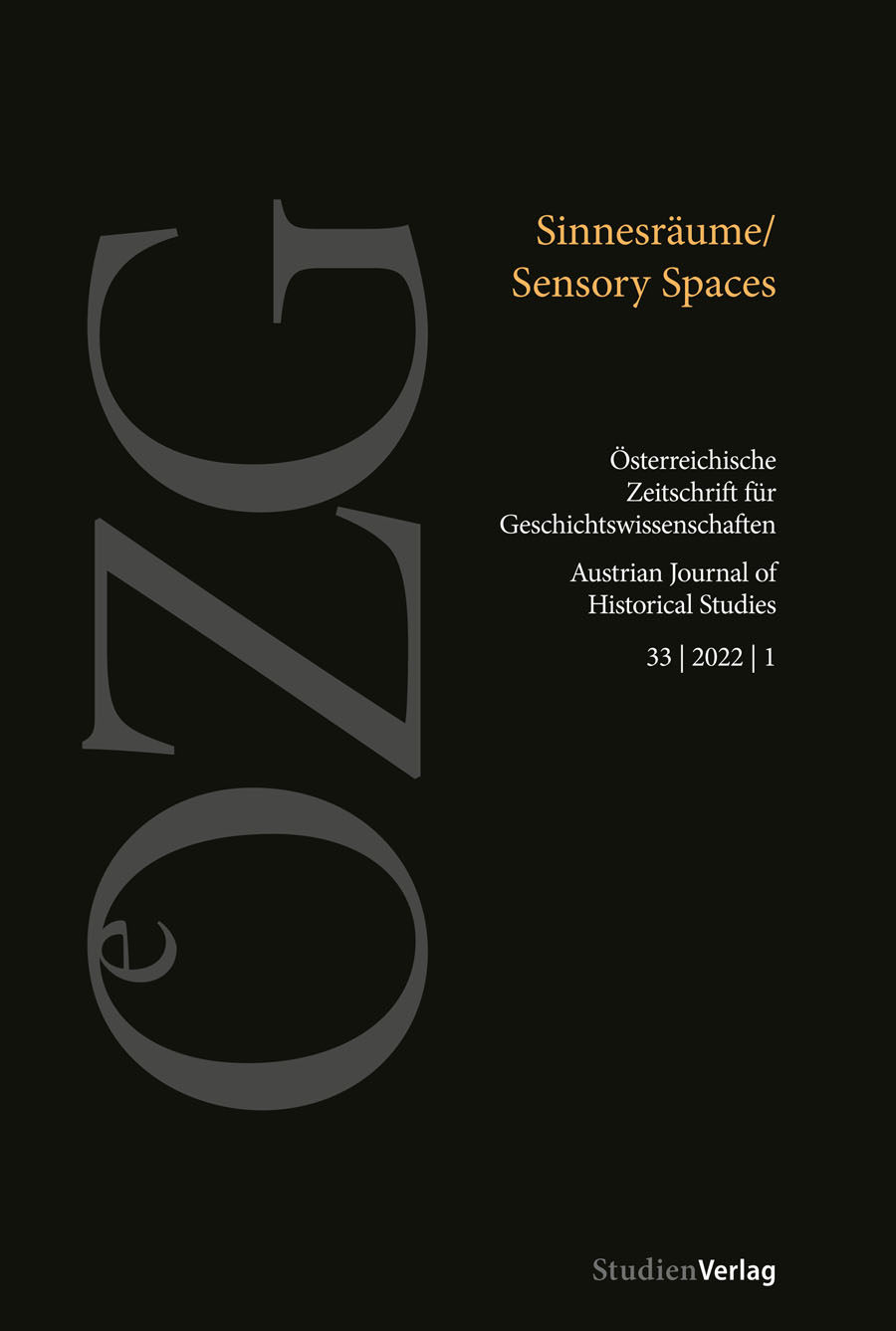Der Teufel als Ohrwurm
Über das Hören und Spüren von Stimmen im Sinnesraum der Irrenanstalt
DOI:
https://doi.org/10.25365/oezg-2022-33-1-4Schlagworte:
psychiatry, asylum, hallucinations, bodily sensations, sensory space, spatial practices, Henri Lefebvre, Sound History, resonance, Tyrol, nineteenth centuryAbstract
This article examines sensory experiences as well as spatial practices in the asylum. The case history of an unmarried maid who was treated at the insane asylum in Hall in Tyrol around the middle of the nineteenth century serves as a central thread. Her medical record thematises senses and spaces ‘outside’ and ‘inside’ the body, focusing on individualized dimensions of experiencing psychiatric sensescapes. The spatial and sensual references in medical records often point beyond the epistemic institutional place and can be elaborated based on more dynamic concepts of space, such as those provided by Henri Lefebvre. This article further links the case of the young woman plagued by terrible visions and haunted by inner voices with reflections on spatial and metaphorical resonance phenomena and addresses the space-arranging practices of physicians in the asylum.
Downloads
Veröffentlicht
Zitationsvorschlag
Ausgabe
Rubrik
Lizenz
Copyright (c) 2022 Österreichische Zeitschrift für Geschichtswissenschaften

Dieses Werk steht unter der Lizenz Creative Commons Namensnennung 4.0 International.


